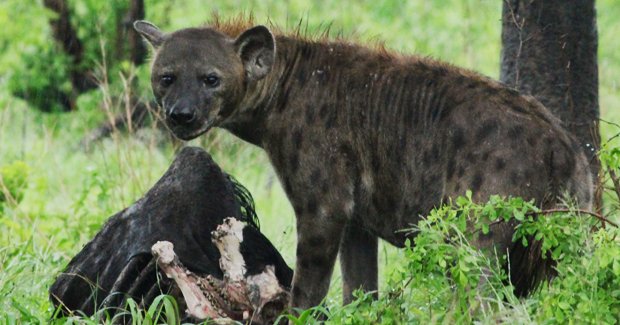AG African safari: bottom of the food chain

AG Society administrator Kylie Piper comes face to face with the top of the food chain.
FROM SWAZILAND, WE head back into South Africa and to Hlehlewe-Imfolozi Park. As two of the oldest conservation areas in South Africa, the combined parks have over 120,000 hectares of land with 30,000 hectares designated as wilderness area – specifically for the animals with no vehicles allowed. Imfolozi game reserve was established in 1895 and Hluhluwe was designated two years later in 1897.
LAUNCH THE GALLERY
The thunder rumbles off in the distance as we start our drive through emorial Gate in the north east of Hluhluwe and past signs reminding us not to leave the vehicle, that elephants and rhino abound, and that we are now once again “bottom of the food chain” with hyena, leopard and lion all found here.
As we wind through the rolling hills, buffalo stand like sentries on the slopes and the green grass is a stark contrast to the dusty, scrubby lands we have been through. Lightning strikes crash towards the valley floor below as we begin our ascent. The rain begins and it pounds the window of the car as the mist descends. Torrents of water run down the road and the smell of rain and soil is everywhere, filling the car with the most amazing aroma and adding another element to the already overloaded senses.
We slow as the fog gets thicker and we climb up the mountain to Hilltop Lodge and take momentary refuge from the storm. Once the rain has subsided we clamber back into the vehicle and down the mountain. The rain has made every colour brighter: the Imfolozi river snakes through the valley, a wave of coffee brown amidst a forest that is every shade of green.
As we round a corner, our guide Bertie tells me that the animals will come onto the road during the rains. The big cats, in particular, like to walk the road rather than scurrying through the wet undergrowth. Before he can finish we come to an abrupt halt as a giant bull elephant stands contentedly in the middle of the roadway. He is obviously not planning on going anywhere for some time as he drinks from the puddles that have formed on the road. He crosses one hind foot in front of the other and looks up at us, seemingly not a care in the world.
“We can sit here and wait until he leaves or we can go around” says Bertie – around being a 20km detour. We opt for the detour, and pass two rhino frolicking in the rain. One struggles up a muddy embankment as his friend prances around on the high ground, waiting to be joined on the grassy bank that is their playground. Rhino are abundant here, but poaching is still rife within the borders of South Africa. Before our tour is out Bertie receives word that six rhino have been poached from a game park of his friend and there are numerous stories on the radio reminding people about the rhino’s plight.
We round a corner to catch a hyena dining on the carcass of a buffalo. We stop the car and watch as it rips pieces from the bone. He looks up at us, changes his position and goes back to feeding; we’re no threat to his meal. Later that night we sit on the verandah of our safari tents and hear the hyena approaching, their screeching howls will put us to sleep this night, but now they are on the prowl for the remains of our brae dinner. In the dark with my torch shining in every direction, I can sense it as I walk alone back to my tent, aware that I am potential prey for the carnivores that sit unseen somewhere in the darkness.
LINKS
2011 AG Society African expedition
Africa 2011 PDF flyer
RELATED ARTICLES
AG Society Galapagos expedition blogs

